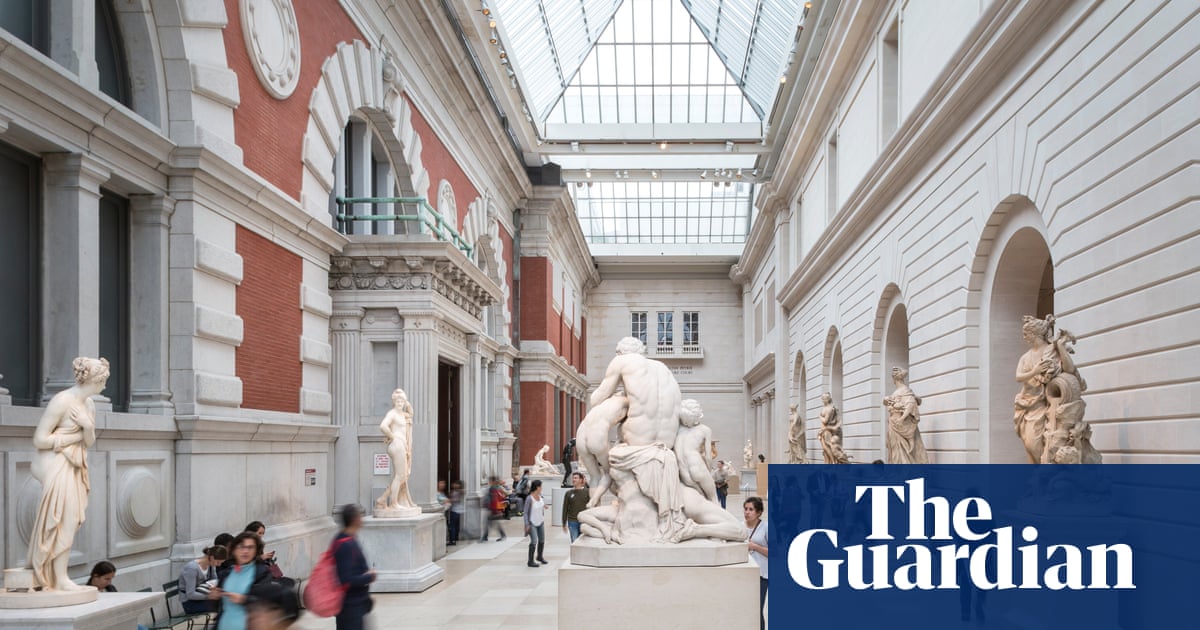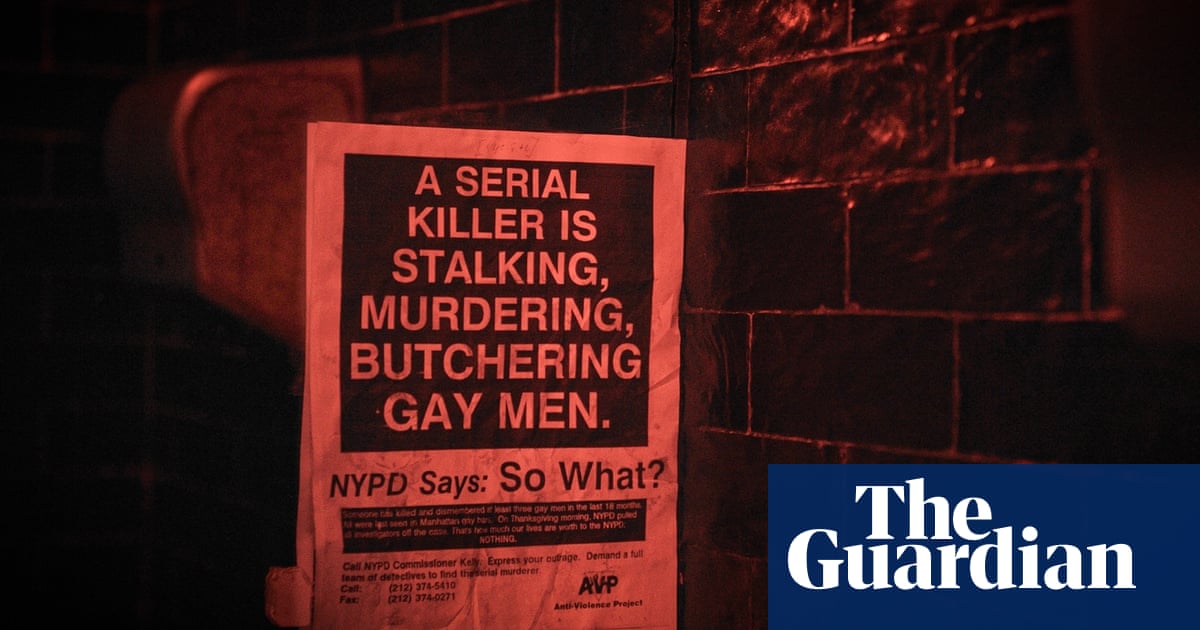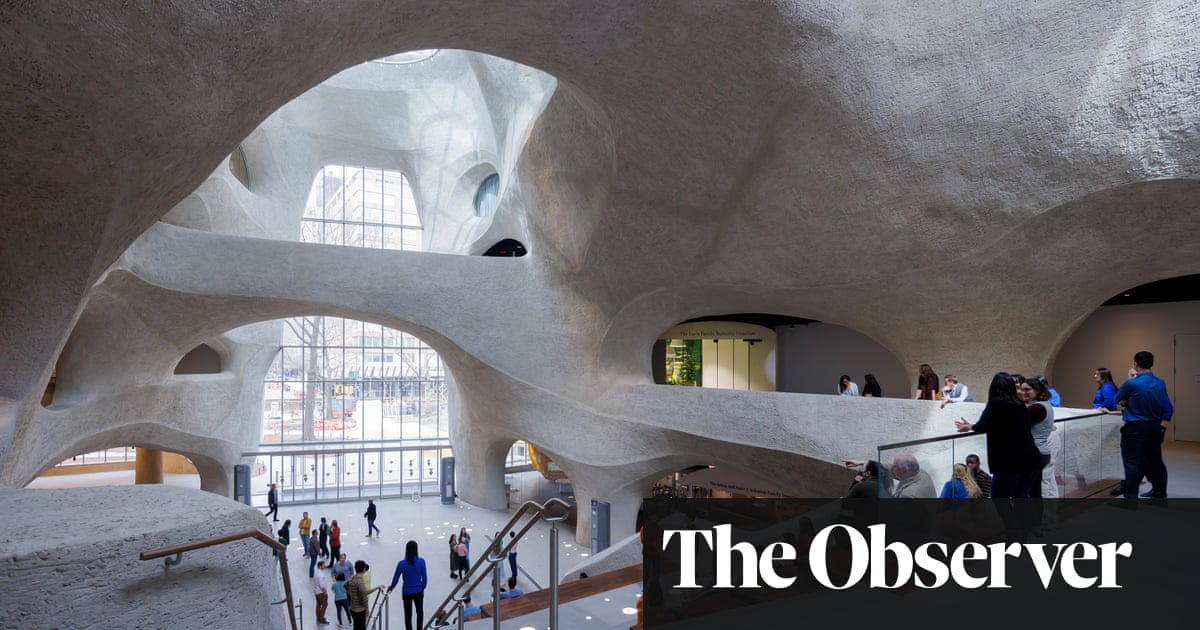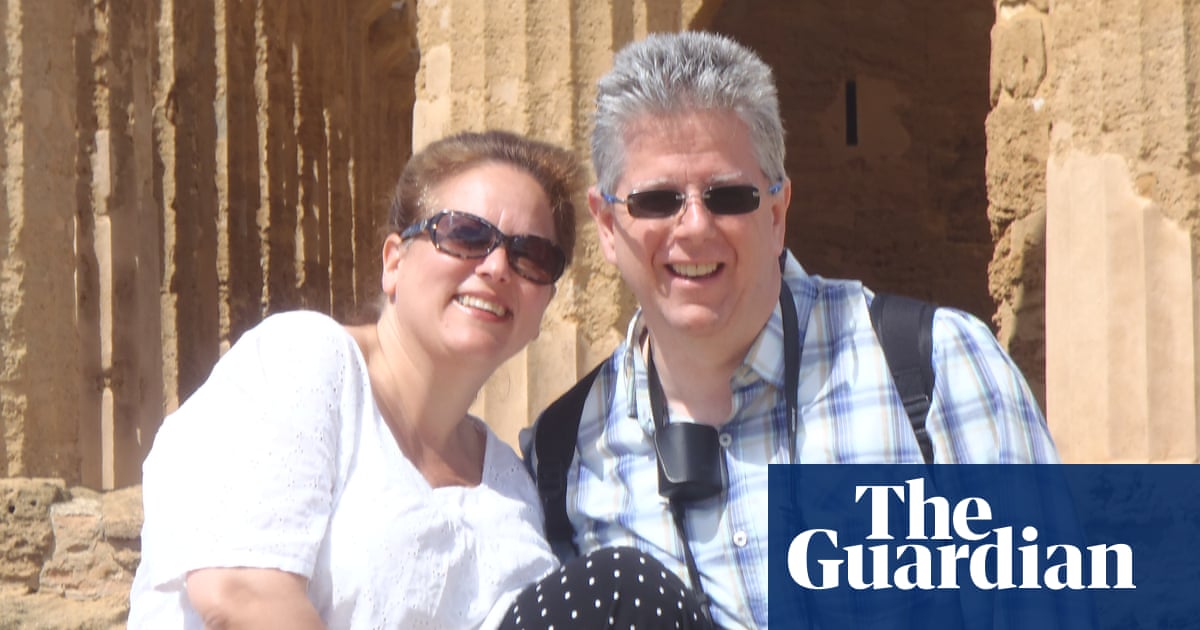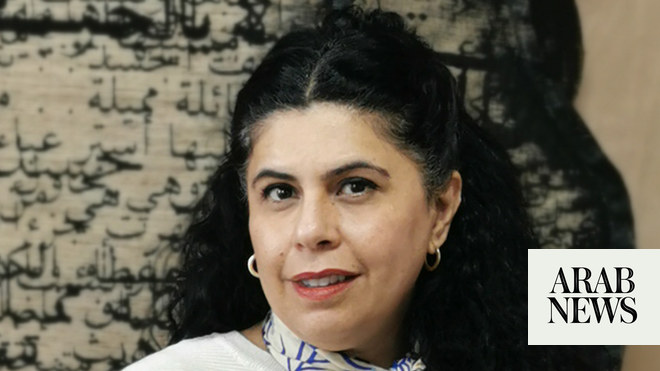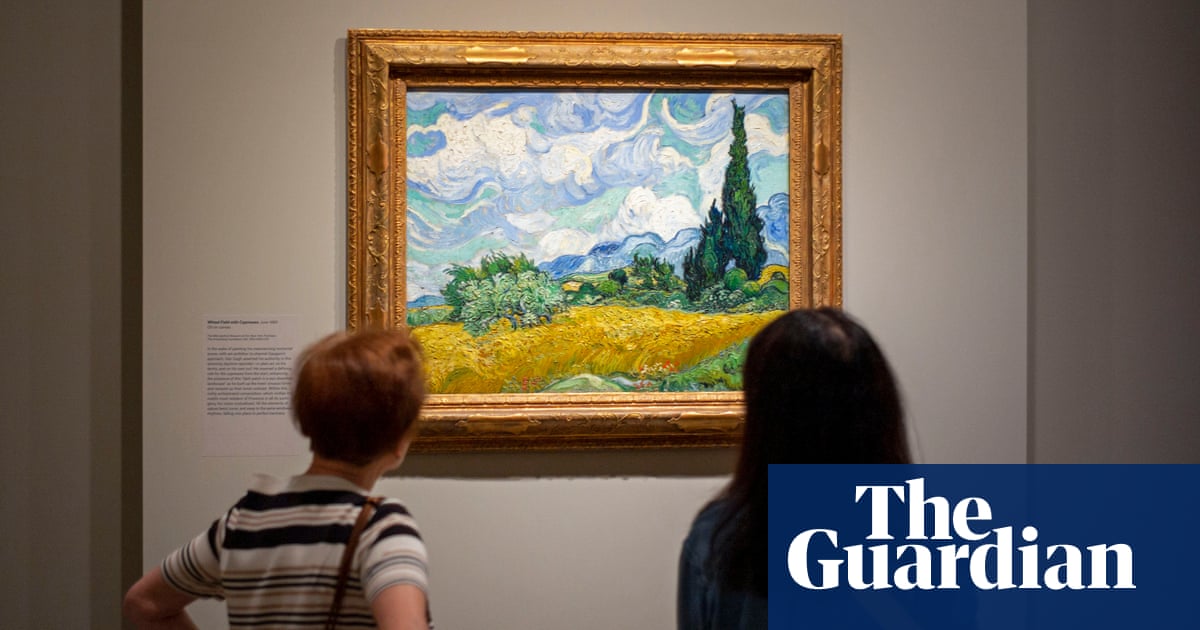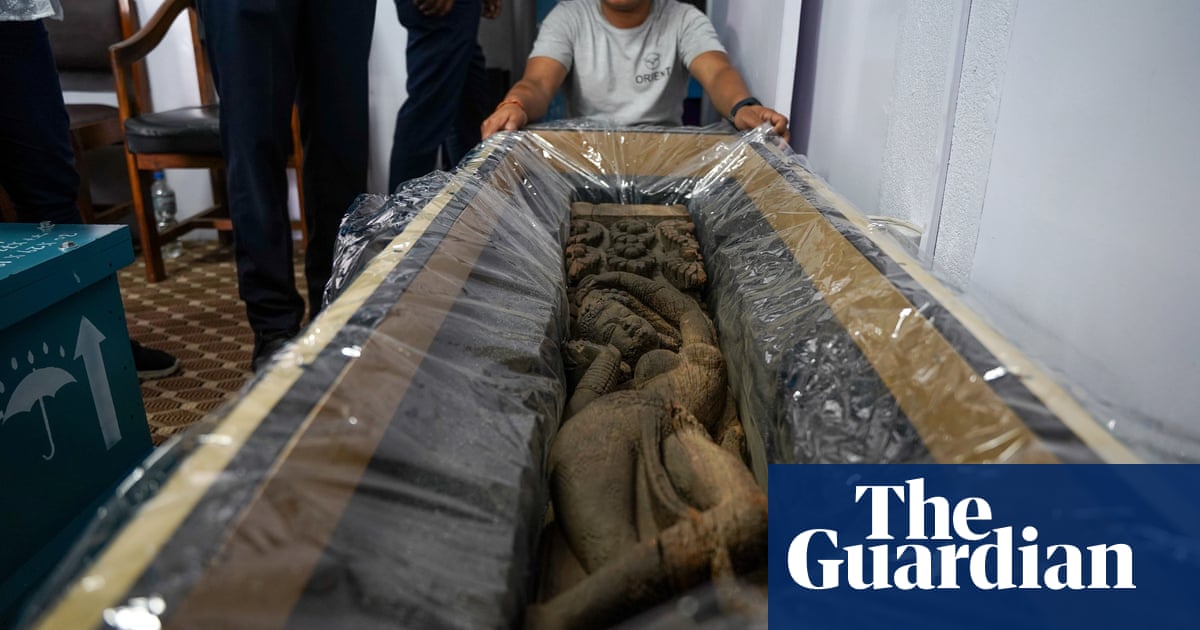
In the village of Bungmati, Nepal, above an ancient spring, stand two stone shrines and a temple. On the side of one of those shrines is a large hole where a statue of Shreedhar Vishnu, the Hindu protector god, used to be.
Carved by master artisans nearly a thousand years ago, the sandstone relic was carefully tended and worshipped by local people. Sometime in the early 1980s that tradition abruptly ended when thieves removed the 20in statue. A Bungmati resident, Buddha Ratna Tuladhar, recalls how the community was “overwhelmed by melancholy” over its loss. “We kept hoping the statue would be restored, but it never was,” he said.
About a decade after the theft, and on the other side of the world, a wealthy American collector donated the statue to New York City’s celebrated Metropolitan Museum of Art, where it would remain for nearly 30 years, until an anonymous Facebook account called the Lost Arts of Nepal finally identified it, in 2021. Although the Met has since removed the statue from its publicly listed collection, signaling that it may soon be returned, the damage to the Bungmati community was already done.
“Nepal has a living religion where these idols are actively worshiped in temples. People pray to them and take them out during festivals for ceremonies,” said Roshan Mishra, a volunteer with the Nepal Heritage Recovery Campaign, a coalition formed to restore the country’s lost heritage. “When relics are stolen, those festivals stop. Each stolen statue erodes our culture. Our traditions fade and are eventually forgotten.”
In the antiquities trade, the Met’s reputation has also begun to erode. Over the last two years, the International Consortium of Investigative Journalists (ICIJ) and its news media partners have reported on the Met’s acquisition practices – often in relation to a trove of items obtained from Cambodia in an era when that country’s cultural heritage was sold off wholesale to the highest bidder. A broader examination of the Met’s antiquities collection, conducted by ICIJ, Finance Uncovered, L’Espresso and other media partners over recent months, raises new concerns over the origin of the museum’s inventory of ancient statues, friezes and other relics.
New York’s Metropolitan Museum of Art opened in 1880, long after its counterparts in Paris and London. The museum started out with a purchase of 174 paintings, placing it far from the scale of France’s palatial Louvre’s galleries already holding thousands of works, many inherited from the nation’s colonial exploits.
Even in the 1960s, the largest museum in North America was still playing catch-up. The Met’s leadership aggressively sought major acquisitions and took a casual approach to, and even at times embraced, antiquities smuggling as a mainstay of the museum’s sourcing.
Under its then director, Thomas Hoving, the Met embarked on a buying spree in an effort to build out an antiquities collection that could match rivals in London and Paris. Over the following decades, the institution filled its halls and warehouses with treasures from Greece, Italy, Egypt, India, Cambodia and beyond. “Not a single decade of any civilization that took root on earth is not represented by some worthy piece,” Hoving later wrote of the results of work he had begun. “The Met has it all.”
Today governments, law enforcement officials and researchers have linked a mounting number of the Met’s relics to looters and traffickers. While the Met has voluntarily returned some items, prosecutors have seized others.
Reporters reviewed the museum’s catalog and found 1,109 pieces – of which fewer than half have records describing how they left their country of origin – previously owned by people indicted or convicted for antiquities crimes or their galleries, and 309 of those are currently on display.
ICIJ and Finance Uncovered found that hundreds of antiquities in the Met’s collection have no records tracing back to a country of origin. A deep look at the museum’s catalog of more than 250 Nepali and Kashmiri antiquities, for example, shows that only three have origin records explaining how they left the regions (ICIJ focused on these collections because both regions have seen heavy looting that has received relatively little news coverage).
Investigators’ interest in pieces in the Met’s collections, along with stepped-up media coverage, has caused experts in the antiquities trade to question how many more pieces in the museum’s catalog could be repatriated, and what that might mean for the art world at large.
In response to questions from reporters, the Met defended its collection practices. “The Met is committed to the responsible collecting of art and goes to great lengths to ensure that all works entering the collection meet the laws and strict policies in place at the time of acquisition,” said Kenneth Weine, a Met spokesperson. “Additionally, as laws and guidelines on collecting have changed over time, so have the museum’s policies and procedures. The Met also continually researches the history of works in the collection – often in collaboration with colleagues in countries around the world – and has a long track record of acting on new information as appropriate.”
What the Met decides to do about these concerns will have consequences not just for the museum itself, but possibly for what the public can expect from museums all over the world.
“The Met sets the tone for museums around the world,” said Tess Davis, executive director of the Antiquities Coalition, an organization that campaigns against the trafficking of cultural artifacts. “If the Met is letting all of these things fall through the cracks, what hope do we have for the rest of the art market?”
‘We all believe the stuff was illegally dug up’
Hoving, who served as the museum’s director from 1967 to 1977, is credited with transforming the Met into a world-class museum of major works. In his 1994 memoir, he describes how his decade of aggressively acquiring for the Met drew upon an array of illicit sourcing. He wrote that his address book of “smugglers and fixers” and other art world acquaintances “was longer than anyone else’s in the field”. Being an accomplice to art smugglers, he wrote, was a necessary role for a Met director.
He had approved the purchase of a large batch of Indian and Cambodian antiquities that he suspected had been smuggled, and hid diary entries detailing his misgivings about the origins of a stolen Greek ceramic work. When Turkish authorities asked for the return of allegedly stolen relics from the Met, he made a striking admission of guilt to a fellow curator.
“We all believe the stuff was illegally dug up,” Hoving recalled having told a longtime Greek curator. “For Christ’s sake, if the Turks come up with the proof from their side, we’ll give the East Greek treasure back. And that’s policy. We took our chances when we bought the material.”
The Met’s dealings with accused antiquities traffickers predated Hoving’s tenure. In the 1950s, the Met began acquiring pieces from Robert E Hecht, an American-born antiquities dealer who spent decades running afoul of authorities and was ultimately put on trial on charges of antiquities smuggling in Italy. In 1959 and 1961, Italian prosecutors charged Hecht with antiquities smuggling and issued an arrest warrant for him in 1973, which was later revoked. But the Met kept buying from him anyway. The Italian case against Hecht, who died in 2012 at the age of 92, was ultimately dismissed due to a statute of limitations expiring. Hecht denied involvement in the illegal exportation of art.
Bruce McNall, Hecht’s former business partner who helped him sell pieces to the Met, told ICIJ that the museum had asked little about how the pieces were acquired. “I don’t think Bob [Hecht] would disclose specifically too often where he got things,” McNall said. “Did I know the things were coming from illegal sites? No, but I suspected it. But we never really went into it at length.”
McNall said he had sold one Greek vase to the Met despite knowing nothing about how Hecht had acquired it. McNall also said he recalled that the Met’s esteemed classics curator Dietrich von Bothmer “did not ask me for any details about its origin or where it was found”.
The Met still holds nearly two dozen pieces once owned by Hecht, including seven Greek vases. None of the Met’s pieces tied to Hecht list any provenance or history of ownership that would explain how they left their home countries.
McNall said he avoided the underworld that supplied his business partner with relics. “This is a mafia-run business, and you have to be kind of careful,” McNall said of Hecht’s dealings in Italy and Turkey. “These are tough guys, so my view of it always was: ‘Let Bob handle it.’ I don’t want to deal with that shit. I’m not going to go over there and deal with these kind of guys.”
Museum records of Hecht’s most notable sale to the Met, a $1m Greek vase, show the museum’s eagerness to acquire unique relics – and the few questions it apparently asked of Hecht. “The vase, if acquired, would not only raise the stature of the Greek and Roman collections but would also be considered one of the greatest objects in the museum,” according to the minutes of a Met acquisitions committee meeting about the purchase. The summary of the committee’s discussion makes no mention of the vase’s origin apart from Hecht as its seller. Hoving later became an advocate for repatriating stolen relics and joined a campaign to pressure the Met to repatriate the vase. In 2008, after a long-running criminal investigation into the piece’s origin, the museum returned the vase to Italy, where it had originally been dug up.
The Met also has more than 800 pieces in its collection – by far the largest portion in ICIJ’s analysis – once owned by Jonathan P Rosen, another close business partner of Hecht’s. The museum received these both before and after Rosen was charged along with Hecht in an Italian antiquities trafficking case in 1997.
A banking official and avid collector, Rosen co-owned a New York gallery with Hecht. In the mid-2000s, Rosen’s name emerged in connection with the gallery when Italian prosecutors alleged that it had sold stolen Italian treasures. In 2008, the Cleveland Museum of Art returned allegedly stolen relics it had received from Rosen. In 2013, the Los Angeles Times reported that Cornell University had agreed to return 10,000 ancient tablets to Iraq that had been donated by Rosen and his family. Scholars believed the pieces had been looted from Iraq after the 1991 Gulf war. An attorney for Rosen told the newspaper that the tablets “were legally acquired”.
The charge against Rosen in Italy was cited in a sprawling criminal case against Giacomo Medici, a notorious antiquities smuggler convicted in Italy in 2004. The Italian judgment against Medici states that Rosen had helped sell the J Paul Getty Museum a stolen ancient tripod.
Guglielmo Muntoni, a judge in Rome who presided over the Medici case, said that Rosen was never brought to trial due to a statute of limitations expiring and because an important piece linked to Rosen was returned from the US to Italy. A representative for Rosen told ICIJ that Rosen was not able to comment because of poor health.
The Met’s collection also contains 85 pieces once owned by Subhash Kapoor or his gallery. The US Department of Homeland Security has described Kapoor as “one of the most prolific commodities smugglers in the world”. He was arrested in Germany in 2011 and convicted in India this year for trafficking what prosecutors have said amounts to more than $100m in antiquities.
One of the Metropolitan Museum of Art’s high-profile antiquities from present-day India, Celestial Dancer, was acquired in a deal involving Art of the Past, Kapoor’s Manhattan gallery at the time. In 2013, two years after Kapoor’s arrest, the gallery’s manager pleaded guilty to selling stolen Asian works. Yet in 2015, as Kapoor awaited trial on smuggling charges in India, the Met accepted the piece as a donation from wealthy collectors who had purchased it from his gallery.
The Met’s publicly available origin records for Celestial Dancer do not give any hint of how the work left India. An archived version of the Met’s website from 2016 states that the piece “ornamented a north Indian Hindu temple” in present day Uttar Pradesh. This language no longer appears on the museum’s website.
In response to ICIJ’s questions, the Met provided no information about how the museum knew where it had come from and provided no information on how it believed the piece had left the country.
‘You don’t know what goes on behind closed doors’
Hoving wrote that late in his tenure at the Met, he attempted to change the museum’s practices. In the early 1970s, he attended Unesco hearings on looted antiquities and came away feeling that “the age of piracy had ended” and “decided to change the Metropolitan’s freewheeling methods of collecting”.
But there is little evidence that the Met tightened its acquisition standards in the years that followed. The number of pieces susceptible to claims of looting only grew. The museum’s lax approach to acquisitions has subjected large parts of its catalog to questions today. Last year, the Met’s former curator of east Asian art, Martin Lerner, said he had relied on “the goodwill and integrity” of dealers like his friend Douglas Latchford, who was indicted in late 2019 for antiquities trafficking.
Throughout 2022, US authorities seized at least 29 items from the Met’s collection – including Greek busts, Egyptian bronzes, and ancient plates, helmets and statues made from gold, bronze and terracotta pillaged from across the Mediterranean and India. The investigators responsible for the seizures are part of an antiquities trafficking unit led by Matthew Bogdanos, an assistant district attorney in Manhattan.
Bogdanos says his office is not investigating the Met specifically, but that prominent pieces of its collection have been swept up in investigations primarily focused on individual traffickers. In its five years of operation, his unit has begun to develop a fuller picture of international trafficking rings, and Bogdanos says he expects the pace of his office’s actions to accelerate as a result.
“The Met was established to be in competition with the major museums around the world,” said Erin Thompson, professor of art crime at John Jay College of Criminal Justice. “It wants one of everything. When you put those conditions together, it’s pretty dangerous in terms of making the most ethical decisions.”
But the Met is not alone in its struggles. Around the world, museums are facing a reckoning over how to deal with looted items in their collections. Last year, London’s Horniman Museum, Washington’s Smithsonian Institution and various German museums and private collectors repatriated items looted from Nigeria. And in the first two months of this year alone, museums and private collectors from the US, Spain and Australia repatriated dozens of looted relics to their countries of origin. Central to the issue are problems endemic to the antiquities market itself, in which transactions worth millions of dollars can be conducted with no due diligence on the part of museums or auction houses.
“The antiquities market has been called the largest unregulated market in the world,” said Angela Chiu, an independent researcher and expert on Asian art and the antiquities market. “It’s self-regulating, and you don’t know what goes on behind closed doors.”
This difficulty of confirming an object’s origin history has led some in the art world to rethink whether museums should be buying antiquities at all. After the National Gallery of Australia returned more than a dozen sculptures it had bought through Subhash Kapoor for more than $8.7m upon learning they were stolen, museum officials made the decision to stop participating in the antiquities market entirely.
“It’s very, very rare for objects to have the level of provenance that we would need to be able to ethically acquire them,” said Bronwyn Campbell, the National Gallery’s senior provenance curator.
‘We will get these relics back’
More than 40 years later, the citizens of Bungmati, in Nepal, still go without their original statue of Shreedhar Vishnu. But with the aid of Lost Arts of Nepal, coalition volunteers have traced three additional relics they say were looted from Nepali temples to the Met’s collection, a claim they support with archival footage showing matches to temple relics.
Site visits and interviews with local residents confirmed two of the three matches, including a smooth, hand-painted wooden statue of Nrityadevi, known as the Goddess of Dance, and an elaborately carved wooden temple bracket, allegedly stolen from a temple in the world heritage site of Bhaktapur. The Nrityadevi was looted from the temple of I Baha Bahi, one of the oldest Buddhist temples in Kathmandu Valley, according to members of Nepal’s Heritage Recovery Campaign.
Guarded by two black stone lions, the two-story brick, wood and mud building once held numerous statues of gods and goddesses. For many years during the holy month of August, the relics were taken out and put on display. Religious devotees from all over gathered to celebrate the Bahidyo Bwoyego festival, during which they sang hymns, chanted prayers and worshipped the idols. In 1970, the temple was raided and the community’s gods and goddesses were stolen.
By cross-referencing photos taken in 1969, Lost Arts of Nepal was able to match the lost Nrityadevi to an item in the Met’s collection and claims to have successfully traced several of the temple’s other lost relics in the collections of other American museums. Members of the Nepal Heritage Recovery Campaign have requested their government’s help to approach the museums and get these relics back.
“I understand the concept of preservation, but taking an object away from its living culture and putting it behind glass in a museum and then saying, ‘We are preserving this object for that country’ – it’s just completely wrong,” said Roshan Mishra of the Nepal Heritage Recovery Campaign.
Because Nepal was closed to foreigners until the 1950s, and has a longstanding ban on the export of culturally significant materials dating back to 1956, the vast majority of items acquired by museums outside the country after that year are probably stolen, according to Emiline Smith, a lecturer in art crime and criminology at the University of Glasgow’s Scottish Centre for Crime and Justice Research.
“The Met shouldn’t have been dealing with [Nepali] objects at all,” said Smith. “Even if you have an object with provenance dating back to 1970, it should not have been traded after 1956.”
Weine, the Met spokesperson, said the museum was “presently in direct discussion with Nepal regarding select objects from the museum’s collection, and looks forward to a constructive resolution and ongoing and open dialogue”. He did not specify which items were being discussed or whether the museum had plans to return them.
“We believe we will get these relics back,” said Mishra. “But we do not know when.”
In the absence of more comprehensive repatriation policies, much of Nepal’s lost cultural heritage will remain behind glass in western museums, far away from its communities of origin.
“If you want to preserve cultural conservation, you need to restore these objects to the community,” said Mishra. “You need to bring them out of the museum space and reinstate them to their original temples, where a living culture is active and where the object can be worshiped and fulfills the purpose of why it was made.”
This story was co-published with the International Consortium of Investigative Journalists




